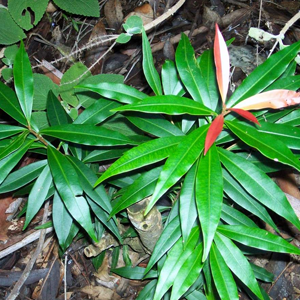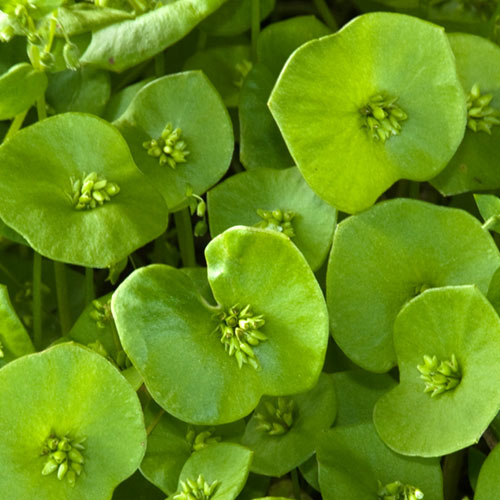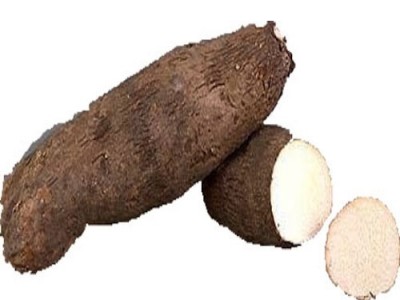

Miner’s Lettuce Health Benefits
Miner’s Lettuce
Plants and trees spread happiness by feeding its children fruits, vegetables, seeds and leaves. But on the contrary human beings destroy them completely for fulfilling their materialistic desires. This earth has not lost few thousands of trees but millions of trees in the past which is a pathetic situation. This is the right time to preserve the mother earth from total extinction. This topic will deal with a plant named Miner’s lettuce which comes under the kingdom plantae and family Montiaceae. The botanical name of this plant is Claytonia perfoliata.
The other common names of this plant are Indian lettuce, spring beauty, winter purslane, or miner’s lettuce. This fleshy annual plant belongs to Western Mountain and coastal regions of North America from southernmost Alaska and central British Columbia south to Central America, but most common in California in the Sacramento and northern San Joaquin valleys. This wonderful rosette-forming plant grows to a height of 40 cm. The cotyledons are bright green rarely purplish or brownish-green. The first true leaves measures 0.5-4 cm long with a long petiole. The small pink or white flowers have five petals which are 2-6 mm long. The flowers appear during the months of February to May or June and are grouped 40 together. The legend goes like this; during California Gold Rush miners ate these leaves to prevent scurvy.
Edible Miner’s Lettuce
The leaves can be eaten either raw or in cooked form. These plants are naturally distributed in waste lands, moist banks and slopes and also dry sandy soils. The seeds are pollinated by flies and self. These plants grow wonderfully in many soils, but prefer dry or moist soils. The flowers have both male and female organ. The flowers, leaves and root all are edible. The leaves can be easily harvested from the farmland since it grows in abundance.
Health Benefits Of Miner’s Lettuce
- The leaves are rich in vitamin c and can also be taken as invigorating spring tonic.
- The leaves also have laxative properties.
- The leaves will grow rapidly only to make the earth a green carpet.
- It will be beautiful to watch this plant in the natural setting. It will capture most part of the earth and make the area a fantastic site.
- The patients suffering from vitamin c deficiency should compulsorily consume these bitter tasting leaves.
- These plants purify the blood, improve the heart function, reduce the cholesterol and protect the lymph nodes.
- These are generally used in soups, salads, burgers, sandwiches and vegetable rolls.
- As the leaves contain omega-3 fatty acid, people suffering from inflammation can consume this leaves happily.
Nutritional Values of Miner’s Lettuce
| Principle | Nutrient Value |
|---|---|
| Calories | 20 |
| Total Fat | 1 g |
| Saturated | 0 g |
| Polyunsaturated | 0 g |
| Monounsaturated | 0 g |
| Trans | 0 g |
| Cholesterol | 0 mg |
| Vitamin A | 22% |
| Vitamin C | 33% |
| Sodium | 0 mg |
| Potassium | 0 mg |
| Total Carbs | 2 g |
| Dietary Fiber | 1 g |
| Sugars | 0 g |
| Protein | 2 g |
| Calcium | 0% |
| Iron | 10% |
Medicinal Use
Lettuce has traditionally been used for its medicinal properties for centuries. It is believed to be beneficial for digestive health and to help with liver function. It is also believed to be a mild diuretic, helping with water retention and providing relief from bloating. Lettuce is also believed to help reduce inflammation and act as an anti-cancer agent. In addition, lettuce is believed to help reduce cholesterol, aid in weight loss, and improve skin and hair health.
Interesting Facts
- Noted botanist Archibald Menzies discovered this plant near West Coast of America in the year 1749.
- Lettuce is 96% water, making it one of the most hydrating vegetables.
- Lettuce is one of the oldest cultivated vegetables, with records of it being grown as far back as 4,500 BC.
- There are many varieties of lettuce, including iceberg, romaine, butterhead, and leaf.
- Lettuce is a part of the sunflower family, Asteraceae.
- In some countries, lettuce leaves are used to wrap food for a light and flavorful meal.
- In the late 1800s, lettuce was believed to be an aphrodisiac, and was popularly served as a dessert.



